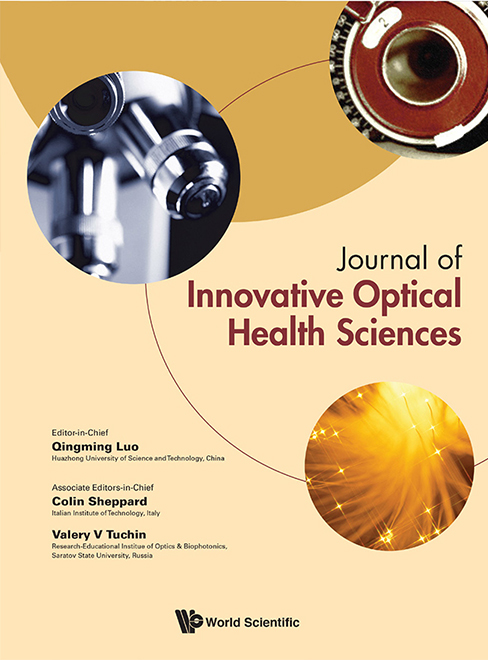 View fulltext
View fulltext
Optical coherence tomography angiography (OCTA) takes the flowing red blood cells (RBCs) as intrinsic contrast agents, enabling fast and three-dimensional visualization of vasculature perfusion down to capillary level, without a r
Surgical excision is an effective treatment for oral squamous cell carcinoma (OSCC), but exact intraoperative differentiation OSCC from the normal tissue is the first premise. As a noninvasive imaging technique, optical coherence
Accurate segmentation of choroidal thickness (CT) and vasculature is important to better analyze and understand the choroid-related ocular diseases. In this paper, we proposed and implemented a novel and practical method based on
In this work, we report a method of removing scattering induced retardance in polarization sensitive full field optical coherence tomography (PS-FFOCT). First, the Mueller matrix that describes its operation is derived. The thickn
Purpose: To introduce the application of intraoperative optical coherence tomography (iOCT) in pars plana vitrectomy (PPV) for various vitreoretinal diseases, and to report the 4-year assessment of feasibility and utility in Chine
In this study, we proposed a method to measure the epidermal thickness (ET) of skin based on deep convolutional neural network, which was used to determine the boundaries of skin surface and the ridge portion in dermal–epidermis j
Cerebral edema is a severe complication of acute ischemic stroke with high mortality but limited treatment. Although parameters such as brain water content and intracranial pressure may represent the global assessment of edema, op
As a high-resolution optical imaging technology, Optical Coherence Tomography (OCT) has been widely used in the diagnosis and treatment of cardiovascular diseases. It has played an important role in the detection and identificatio
We propose a k-domain spline interpolation method with constrained polynomial fit based on spectral phase in swept-source optical coherence tomography (SS-OCT). A Mach–Zehnder interferometer (MZI) unit is connected to the swept-so
To accurately guide surgical instruments during ophthalmic procedures, some necessary intraoperative depth perception is required, which standard surgical microscopes supply limitedly. Intraoperative optical coherence tomography (
It is necessary to investigate the wavelength-dependent variation rules of the refractive index of edible oils so as to explore the specificity of the dispersion in light propagation, imaging, and interference processes among diff
Segmentation of layers in retinal images obtained by optical coherence tomography (OCT) has become an important clinical tool to diagnose ophthalmic diseases. However, due to the susceptibility to speckle noise and shadow of blood










